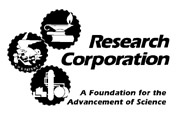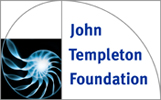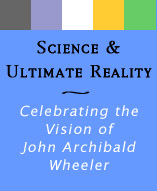About Townes
 Charles Hard Townes
Charles Hard Townes
Charles Hard Townes was born in Greenville, South Carolina on July 28, 1915. He graduated summa cum laude from Furman University in Greenville in 1935 with a B.S. in physics and a B.A. in modern languages. Physics had fascinated him since his first course in the subject during his sophomore year in college because of its “beautifully logical structure.” He was also interested in natural history while at Furman, serving as curator of the museum and working during the summers as a collector for Furman's biology camp. Dr. Townes received his M.A. in physics from Duke University in 1936 and his Ph.D. from the California Institute of Technology in 1939 for his thesis on isotope separation and nuclear spins.
As a member of the technical staff of Bell Laboratories from 1933 to 1947, Dr. Townes worked extensively during World War II in designing radar-bombing systems and now holds a number of patents in related technology. He then turned his attention to applying the microwave technique of wartime radar research to spectroscopy, which he foresaw as providing a powerful new tool for the study of the structure of atoms and molecules and as a potential new basis for controlling electromagnetic waves.
At Columbia University, where he joined the faculty as Associate Professor in 1948, he continued research in microwave physics, particularly studying the interactions between microwaves and molecules and using microwave spectra for the study of the structure of molecules, atoms, and nuclei. In 1951, Dr. Townes and his associates began working on a device using ammonia gas as the active medium. In early 1954, this led to the first amplification and generation of electromagnetic waves by stimulated emission. He and his students coined the word “ maser, ” an acronym for “microwave amplification by stimulated emission of radiation,” for this device. In 1958, Dr. Townes and his brother-in-law, Dr. A. L. Schawlow, showed theoretically that masers could be made to operate in the optical and infrared regions and proposed how this could be accomplished in particular systems. This work resulted in their joint paper on optical and infrared masers, or “ laser s” (“light amplification by stimulated emission of radiation”). Other research has been in the fields of astronomy and nonlinear optics. He discovered the first complex molecules in space and detected and determined the mass of the large black hole in the center of our galaxy.
In 1950, Dr. Townes became Full Professor of Physics at Columbia University. He also served as Executive Director of the Columbia Radiation Laboratory from 1950 to1952 and was Chairman of the Physics Department from 1952 to 1955. From 1959 to 1961, he was on leave of absence from Columbia to serve as Vice President and Director of Research at the Institute for Defense Analyses in Washington, D.C., a nonprofit organization operated by eleven universities. In 1961, Dr. Townes was appointed Provost and Professor of Physics at the Massachusetts Institute of Technology. In 1964, he shared the Nobel Prize in Physics with Nicolay Gennadiyevich Basov and Aleksandr Mikhailovich Prokhorov of the Lebedev Institute for Physics, Moscow, “for fundamental work in quantum electronics which has led to the construction of oscillators and amplifiers based on the maser-laser principle” (see < http://nobelprize.org/physics/laureates/1964 > ). In 1966, he became Institute Professor at MIT. Later in the same year, he resigned from the position of Provost to return to more intensive research, particularly in the fields of quantum electronics and astronomy. He was appointed University Professor at the University of California, Berkeley in 1967.
During 1955 and 1956, Dr. Townes was a Guggenheim Fellow and a Fulbright Lecturer, first at the University of Paris and then at the University of Tokyo. He was National Lecturer for Sigma Xi, taught during summer sessions at the University of Michigan and at the Enrico Fermi International School of Physics in Italy, and was Welsh Lecturer at the University of Toronto.
Dr. Townes has served as a member of the Scientific Advisory Board of the United States Air Force and as Chairman of the Strategic Weapons Panel of the Department of Defense. He is currently Chairman of the Science and Technology Advisory Committee for Manned Space Flight of the National Aeronautics and Space Administration and is a member of the President's Science Advisory Committee. Dr. Townes has served the American Physical Society in various capacities and is currently Vice President. He is also a Trustee of the Salk Institute for Biological Studies, the Carnegie Institution of Washington, and the RAND Corporation. His scientific writings have been published in many technical journals. In addition to the Nobel Prize for Physics, Dr. Townes' honors and awards include the Research Corporation Annual Award; the Institute of Radio Engineers Morris N. Liebmann Memorial Prize; the National Academy of Sciences Comstock Award; the Franklin Institute Stuart Ballantine Medal; the US Air Force Exceptional Service Award; the American Academy of Arts and Sciences Rumford Premium; the American Institute of Electrical Engineers David Sarnoff Award; the National Academy of Sciences John J. Carty Medal; the Institute of Physics and the Physical Society (England) Thomas Young Medal and Prize; the City of Philadelphia John Scott Award; and the Dickinson College Joseph Priestley Award. He received the Institute of Electrical and Electronics Engineers Medal of Honor in 1967 “for his significant contributions in the field of quantum electronics which have led to the maser and the laser.” He received the Russian Academy of Sciences Lomonosov Medal, the Indian Rabindranath Tagore Award, and the German (German-speaking countries) Karl Schwarzschild Medal. Dr. Townes has also received numerous honorary degrees from universities in the US and abroad. In 2005, he won the Templeton Prize.
Dr. Townes is a member and Fellow of the American Physical Society, the Optical Society of America, and the Institute of Electrical and Electronics Engineers. He is a member of the Société Francaise de Physique, the National Academy of Sciences, the American Academy of Arts and Sciences, the American Philosophical Society, the National Academy of Engineers, the Royal Society of London, the American Physical Society, the American Astronomical Society, and the Board of Advisors of the John Templeton Foundation. Dr. Townes continues to do research at the University of California, Berkeley, where his work at present involves very-high-angular-resolution astronomy in the mid-infrared (10 micron-wavelength region) through the use of interferometric techniques. Current work includes demonstration that old stars throw off substantial material episodically on time scales of 10 to 100 years, discovery of a recent episode in which Betelgeuse suddenly emitted a large amount of gas, and measurement of Betelgeuse's diameter.
Charles Townes was married in 1941 to the former Frances H. Brown of Berlin, New Hampshire. They live in Berkeley, California and have four daughters—Linda, Ellen, Carla, and Holly.
![]()














 Charles Hard Townes
Charles Hard Townes